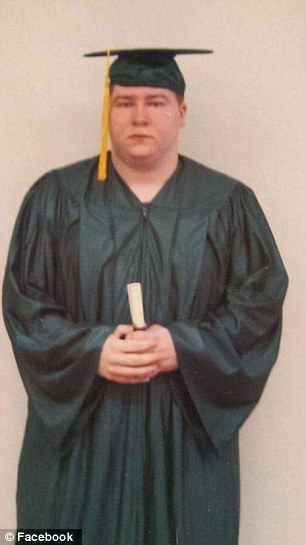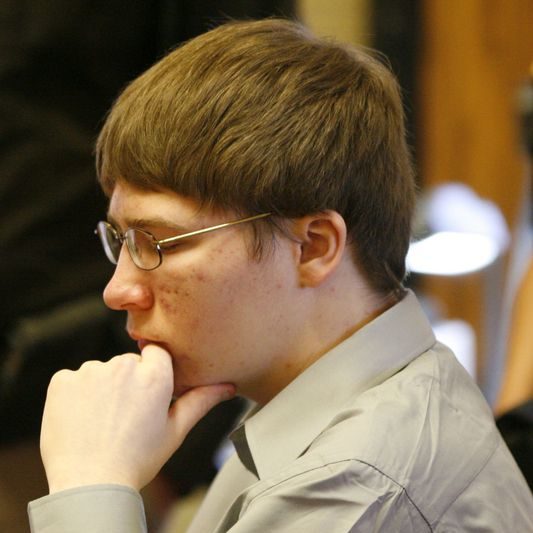Four Things that You Need to Know about the Brendan Dassey Case
11.15.16 By Carlita Salazar
The Innocence Blog recently interviewed Laura Nirider, the project director for Center on Wrongful Convictions of Youth at Northwestern University and an attorney for Brendan Dassey. As many know, Dassey was Steven Avery’s co-defendant in the 2005 rape and murder of Teresa Halbach in Wisconsin and one of the key subjects in the Netflix series Making a Murderer.
Many were shocked to learn at the end of Making a Murderer that Dassey was convicted in 2007 and sentenced to life in prison with no parole for 41 years; he was only 17 years old. Nirider and Dassey’s other attorneys argue that there are serious questions around the confession that Dassey gave police and that led to his conviction.
Based on those questions, earlier this year a federal court in Wisconsin granted Brendan’s petition for a writ of habeas corpus. The state appealed that decision, but yesterday Dassey was released on his own recognizance while he awaits the appeal.
Read the Innocence Blog’s interview with Nirider to learn more about the case and how it’s changed her life.
- When did you first learn about the Dassey case? How and why did you become part of his legal team?
Laura Nirider (LN): I first learned about Brendan Dassey’s case, believe it or not, when I was still a law student at Northwestern University Pritzker School of Law. I was a year away from graduation and decided to enroll in a wrongful convictions class taught by clinical professor Steve Drizin.
Unbeknownst to me, Steve had just been asked by a group of Wisconsin attorneys to represent Brendan during his appeal, primarily because of his expertise in juvenile false confessions. Upon accepting the case, Steve assigned me to it – and I was immediately hooked. In that sense, Brendan’s case literally changed the course of my life.
It opened my eyes to the problems of false confessions and wrongful convictions, two topics to which I’ve subsequently devoted my career. After graduating, I soon returned to Northwestern Pritzker School of Law as faculty, where I’m lucky enough to be able to study interrogations and confessions and to represent Brendan and other kids like him alongside Steve.
I’m also fortunate to co-teach, with Steve, the same class on wrongful convictions that changed my life nearly 10 years ago.

Brendan Dassey since his incarceration. Photo: Facebook.
- What is it like to work on such a high-profile case? How do you protect your client and maintain confidentiality when there’s a film crew closely documenting developments in the case?
LN: Any attorney who has represented a high-profile client knows that a crucial balance must be struck in such a situation, given that media scrutiny invokes a host of concerns like client confidentiality.
We are lucky that the Making a Murderer filmmakers understand and respect those concerns. The respect they have extended us has made it much easier for us to navigate this situation as best we can.
- At the Innocence Project, we push for the mandatory recording of interrogations. In Brendan Dassey’s case, the recordings of his being interrogated have finally worked in his favor, but why did they not prevent him from being wrongfully convicted in the first place?
LN: The mandatory recording of interrogations is a crucial reform for which many organizations, including our Center on Wrongful Convictions of Youth, have joined the Innocence Project in advocating. In fact, a rule requiring juvenile interrogations to be videotaped was instituted in Wisconsin only a short time before Brendan was questioned, making his interrogation one of the first to be fully recorded under the new rule.
But mandatory recording, while an essential reform, does not ensure that the innocent will be acquitted; it simply ensures transparency. It is then up to attorneys to argue why the videotape shows a confession that was involuntary and/or false. Those arguments were not persuasively made to the jury in Brendan’s case.
- What can viewers of Making a Murderer look forward to seeing in the upcoming season?
LN: I wish I knew! All I can tell you is that the filmmakers have continued to document what’s happening in the Dassey case and, I believe, in the Avery case, since the first season was released in late 2015. What will make the final cut for season two? I guess we’ll all just have to wait and find out.
Learn more: Brendan Dassey’s Confession Highlights Importance of Recording Interrogations
Leave a Reply
Thank you for visiting us. You can learn more about how we consider cases here. Please avoid sharing any personal information in the comments below and join us in making this a hate-speech free and safe space for everyone.
November 22, 2018 at 6:14 am
October 15, 2018 at 10:03 pm
Having read Michael Griesbach’s Innocent Killer, I am convinced that Steven did it, and that he enlisted Brendan’s aid to do it. I think his defense should be more focused on his uncle, a male authority of figure, who is also related to him, because the amount of social pressure that an adult can exert on someone with an intellectual disability is HUGE -and this is a relative who he loves, so it’s even bigger-. Brendan is not completely without fault but his circumstances are definitely different than those of Steve: what could have happened when he opened the door and he refused to go inside? I am sure he would have been afraid to deny Steven anything. But no innocent person knows the number of bullets a victim has lodged in her skull BEFORE the police does. He had quickly lost many pounds in the subsequent months and was crying, even confessed to his cousin Kayla that he saw his uncle burn a body. Which would only make him a witness, and then yes, he hid that information so that would have been a smaller sentence, but he knew the number of bullets Teresa had in her skull before the police found those respective fragments so no, he is not innocent, he was part of the brutality that happened prior to the murder and disposing of the body. But I do not think he would have done it had he not been influenced (probably even coerced) by his uncle.
Give this case a different treatment, but do not assume his innocence. He was part of the murder. Still, he has my sympathy and compassion because he was young, has an intellectual disability, and grew up in a very violent environment. Steven and his two other brothers have CONVICTIONS (that anyone can look up) for beating up their partners and sexually assaulting both adult women and teenagers. They are disgusting people. That is what motivates me to believe Brendan had to have been at least partially influenced by his uncle.

I have seen all of MAKING A MURDER. And fully believe that both Avery and Dassey were framed by the Manatoac Sheriff’s dept. I am a retired L A Co deputy sheriff and am VERY PRO POLICE! In this case however, it is so obvious they were behind it as well as other county leaders. Don’t forget, Manatoac owes Steve Avery 36 million dollars, unless he goes to jail. Do the math. As far as Brendan Massey goes, any person with average intelligence can see that he is so confused by this whole thing he is just saying what he believes the investigators want to hear. They have even put words in his mouth. Brendan’s brother is into “Violent Porn” and I believe Brendan has seen some of it and those graphic images are stuck in his head and he is just repeating what he saw in the porn.